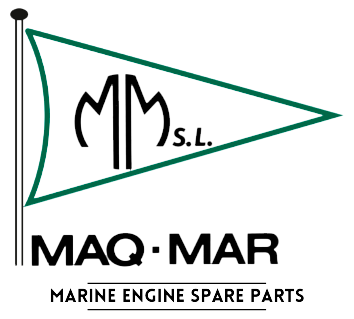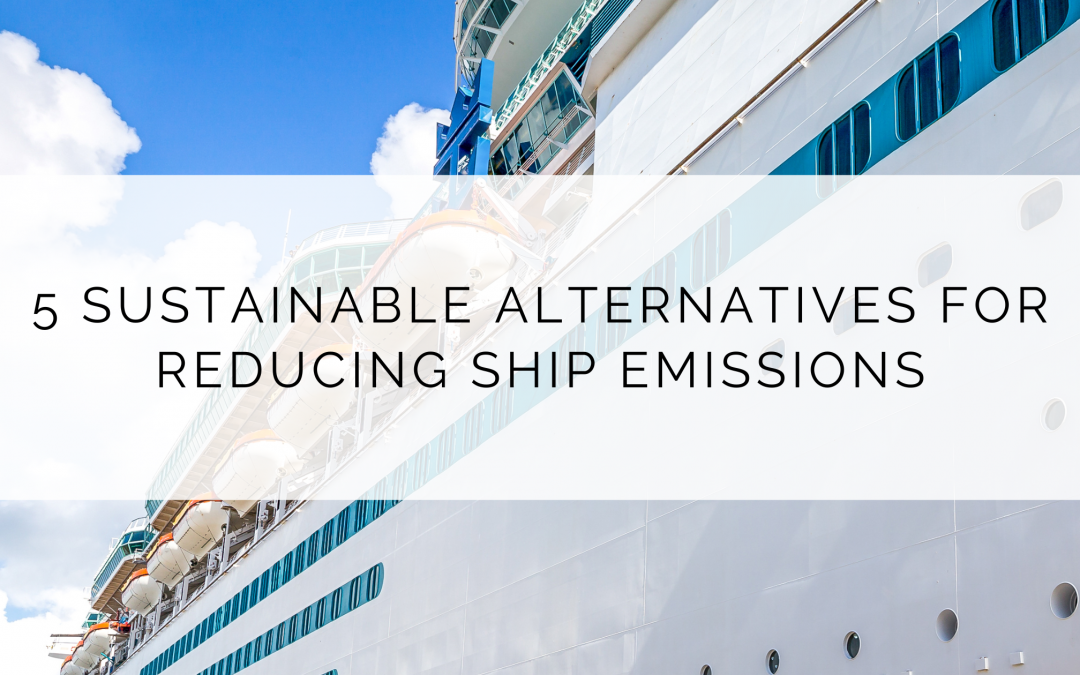In the previous post we explained the difference between fossil fuels and synthetic fuels. Long-distance travel requires energy-intensive fuels, such as fossil fuels. Therefore, in the maritime sector, the energy transition is not an easy task, especially for international freight transport.
Today we bring you 5 sustainable alternatives that ships can use to replace fossil fuels.
Liquefied natural gas (LNG)
LNG is being used as a transition fuel until a viable and totally CO₂-free fuel is found. For example, the world’s largest cruise ship, Royal Caribbean’s Icon of the Seas, uses six engines with LNG and fuel cell technology. The MSC World Europa is also powered by LNG.
It emits 25% less CO₂ (carbon dioxide) than other common marine fuels for the same propulsion power, as well as lower emissions of NOx (nitrous oxide), SOx (sulphur oxide) and particulate matter.
Although there is always a small amount of fuel that is not burned in the engine and escapes with the exhaust gases. LNG is predominantly methane, and when burned as fuel, the unburned methane escapes into the atmosphere.
It is possible to convert a ship to run on LNG depending on the space required for the tanks. The cheapest option is to convert existing engines, but new dual-fuel engines can also be installed. These allow vessels to run on conventional fuels (MGO, HFO, LFO or liquid biofuel) or on LNG. In addition, switching between fuels can be done without loss of power or speed.
Biofuels
Biofuels are produced from vegetable oils, animal waste, crop residues, wastewater and food waste. They can be liquid fuels such as biodiesel and bioethanol or in gaseous form.
Biodiesel is mainly obtained from crops. The most common sources are rapeseed, soybean and palm crops. But it can also be produced from industrial waste, such as from the paper industry.
Bioethanol, on the other hand, is obtained through industrial fermentation that transforms plant sugars into alcohol.
The use of biofuels requires no modifications to ships’ combustion engines and has almost no sulphur oxides (SOx). However, they have a lower energy density than fossil fuels.
Hydrogen
Hydrogen is not very efficient for large ships, due to high storage costs and lower energy density. It is also highly explosive and corrosive.
Internal combustion engines can burn hydrogen, either pure or mixed with diesel fuels.
Instead of going through a combustion process, hydrogen can also be used in fuel cells that convert the energy into electricity, powering the ship through an electric motor.
Some types are:
- Green hydrogen is produced from water by electrolysis with renewable electricity.
- Blue hydrogen is produced by splitting fossil natural gas into hydrogen and CO₂ and capturing and storing the CO₂.
- Grey hydrogen is produced in the same way as blue hydrogen, but the carbon dioxide is not captured but released into the atmosphere.
- Pink hydrogen is produced by electrolysis using nuclear energy.
Ammonia
Today’s ammonia is of fossil origin and is widely manufactured and traded. In terms of storage volume, ammonia is between hydrogen and LNG, which is easier to store and handle on board ships.
It does not have to be stored under compression or at very low temperatures. It does not emit CO₂ into the atmosphere. But it is also very toxic and corrosive, which makes it difficult to handle. Ammonia may be more suitable for large cargo ships.
Methanol
Methanol is a biodegradable wood alcohol used to make everything from plastics to paints and pharmaceuticals. Although toxic and highly flammable, it dissolves in water and biodegrades rapidly.
It can be of fossil or renewable origin. Fossil methanol is produced from coal or natural gas. Renewable methanol, on the other hand, can be produced from biomass or captured CO₂ combined with green hydrogen.
It is also colour-coded:
- Green methanol is made from biomass or captured CO₂ and green hydrogen.
- Blue methanol is produced using blue hydrogen in combination with carbon capture technology.
- Grey methanol is produced from natural gas.
- Brown methanol is produced from coal.
The main advantage of green methanol is that it produces less CO₂ than diesel combustion, as well as less SOx and NOx emissions. But, like hydrogen, it requires a lot of space. It can also be used in dual-fuel engines or with fuel cell technology.
In addition to marine engines, at MAQMAR you can find pumps for ships, such as centrifugal pumps with an electric motor. But we can also offer you all kinds of original, OEM or reconditioned marine spare parts, oils and lubricants for ships, and much more. If you have any questions about our products you can contact us and we will help you find what you need.
See you next post!


Recent Comments